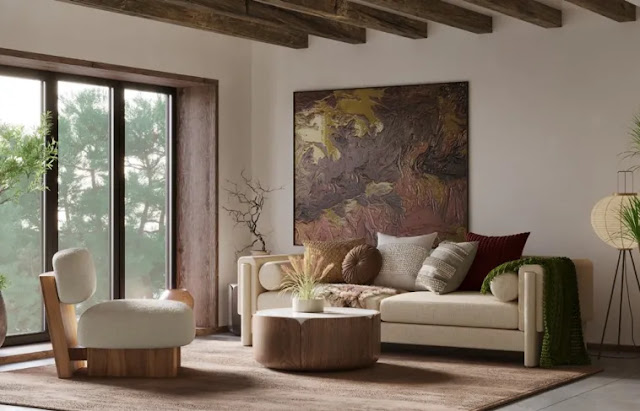Home Interior Designs: Use These Tips to Make Your Home Look Amazing!
Home Interior Designs - What are the fundamentals of interior design? The interior of a structure, whether a home or a place of business, is the starting point for any interior designer. Interior design’s ultimate goal is to create a living or working space that is aesthetically pleasing, functional, and reflects the personality of its occupants. Kelling Designs’ founder and creative director, Emma Deterding, advises focusing on making the space appear good and functional for its intended users. Inspiration for a beautiful home’s decor can be found anywhere: in the great outdoors, in glossy fashion magazines, or abroad.
What is the most popular home decor style today?
There are several current trends to consider when it comes to house design and decor. Don’t be afraid to experiment and borrow elements from various designs to create a home that speaks to you.
Modern Furnishings
The elegance of modern design does not have to come at the expense of contextual appropriateness. To be successful, you must use the right components and create a cutting-edge design that skillfully blends the old and the new. When designing, always remember that less is more. Be aware that cutting-edge styles can have an icy, factory-like feel to them. To add personality and coziness to your space, use layered lighting and varied furniture textures. Incorporate a variety of textures into your next contemporary creation. Glass that is both flat and shiny complements the stone, and the building’s restrained use of steel gives it a modern feel.
Layouts that are authentic
Traditional interiors will never go out of style, and there are numerous ways to update them to reflect modern tastes and preservation efforts. The use of classic, uncluttered lines does not imply that any attention to detail has been paid. Even if your traditional furniture has intricate details like beading around the drawers and doors, you can update its look by pairing it with simple, neutral-colored modern appliances and accessories.
When it comes to creating a conventional floor plan, the devil is in the details. The addition of cornices and plinths can change a house’s classic appearance.
Interior design that is simpler
It was previously assumed that the furniture had a mid-century modern look and feel to it. A mix of Scandinavian and Japanese design elements has made it cozier and more down-to-earth. To soften the clinical feel of a white space, incorporate rattan lighting, artisanal vases, a plush wool rug, and raw wood furniture. Brown, caramel, and dusty sienna, for example, are all earthy tones that serve as inspiration for neutral colors.
Painting storage bins contributes to this aesthetic by keeping the floor clear of furniture.
Classically decorated
Everything from new to ancient can be used in a vintage design. The trick is to create a dynamic, unified scheme with strong colors, favorite pieces, and the "less is more" concept rather than completely replicating the style.
Consider using two strong accent colors, but keep in mind that the connecting element must contain something in each of those colors. This could be anything from a rug or painting to the upholstery on a chair or pillow. Bright colors are acceptable as long as there is a single focal point that connects the area.
Attempt to draw inspiration from other eras’ design philosophies, such as Bauhaus.
Blue and mustard yellow, or purple and tomato orange, are examples of primary colors you could use there. Colors should be bold but not overly brilliant; therefore, muted tones are recommended for a more natural appearance.
Decorations with an industrial theme
Interiors with salvaged materials or an industrial aesthetic are still popular because of their ability to enliven a space, complement both historic and contemporary buildings like lofts and warehouses, and add a touch of urban chic to a more traditionally rustic setting. Overuse, on the other hand, can give the impression of icyness. The key to creating a warm, lived-in space is to combine industrial elements with softer furniture. Use it with white or pale-colored walls and woodwork with minimal highlighting. Stay on topic. Metal fixtures should never be paired with chintz or a busy pattern. Simpler shapes will complement the design better.
The Latest in Contemporary Interior Design
It’s no surprise that people continue to prefer mid-century modern architecture and interior design. The German Bauhaus school, for example, influenced these forms from the 1930s to the 1970s. Plastic and other molded materials allow designers to experiment with new textures, colors, and forms.
The organic curves and straight lines that define midcentury design are instantly recognizable. The design should be simple and free of frills and complexity, with a limited color palette. Despite the emphasis on technological advancement, the natural world was a major source of inspiration for mid-century designers. The most common furniture material was wood.
With a Nod to the Past
With its use of modern materials and colors, this style brings the timeless vintage aesthetic into the present. Simple layouts with out-of-the-ordinary details, patterns, and ornaments are a bold nod to the past. This style works best in modern, open-floor-plan homes with bolder color and pattern choices.


Post a Comment for "Home Interior Designs: Use These Tips to Make Your Home Look Amazing!"